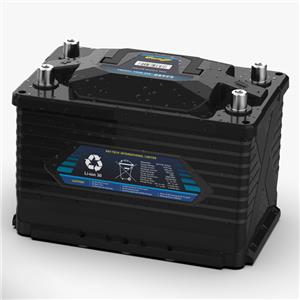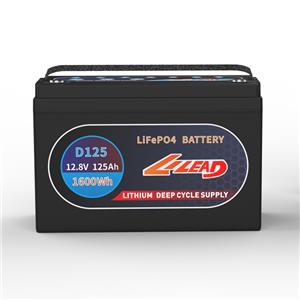Battery enterprises compete for the 10 billion electric ship market
With the market's attention to low carbon and environmental protection, ship electrification has become another focus of attention after electric vehicles, which has also led to the continuous development of the electric ship battery industry:
There are two kinds of battery charging modes. One is to use the power supply on the dock to charge, that is, when the ship stops at the dock for passenger and cargo loading; The other is to use the generator on the ship to charge, and the ship can recover the surplus electric energy into the large-capacity lithium battery on the ship while sailing.
When the ship is operating in and out of the port and navigating offshore, it can fully use the battery mode to promote and minimize the air pollution to the port and city.
Electric ship refers to the ship that generates electric propulsion by means of lithium battery, which has the advantages of zero pollution, low noise and safety.
The ship industry has huge space for electrification and broad market prospects. Research and Markets previously released the 2015-2024 Global Market Report on Electric Ships, Small Submarines and Automatic Underwater Ships, which mentioned that the global electric ship market will reach 7.3 billion US dollars (about 50.162 billion yuan) by 2024.
According to the White Paper on the Development of China's Electric Ship Industry (2022) released by the domestic research institute EVTank, the output of domestic electric ships in 2021 has exceeded 100, driving the shipment of lithium ion batteries for electric ships to 173.2MWh, with a year-on-year increase of 129.1%. It is expected that the market scale of China's electric ships will reach 36.75 billion yuan in 2026, driven by the electric transformation of the original ships and the newly built electric ships, which will drive the demand for lithium ion batteries to reach 11.2GWh in 2026.
Battery giants have laid out
With the dual support of the market and policy, the battery giants have accelerated their entry into the field of marine power batteries.
As the first lithium battery manufacturer to enter the marine field. As early as 2016, the marine power battery of Yiwei Lithium Energy obtained the CCS certification of China Classification Society, and obtained the German Rhine explosion-proof certification in 2019. The pure electric cruise ship "Kuokuzhen Princess", the first domestic large pure electric commercial passenger ship "Junlu", the pure electric port tugboat "Yungang Electric Tow 1", and the pure electric container ship "Guochuang" all carry power batteries with lithium energy of billion wei.
Ningde era, the global power battery leader, is not willing to lag behind. In 2018, Fujian Province's first electric high-end inland river cruise ship, "Star of the Minjiang River", made its maiden voyage, using the Ningde era large-capacity lithium iron phosphate battery; In 2020, the first marine dangerous goods emergency command ship "Deep Sea 01" independently designed and built by China was launched in Guangzhou, carrying the 1.5MWh lithium iron phosphate battery of the Ningde era; In 2021, the "Sun Yat-sen University", the largest marine comprehensive scientific research practice ship in China using the Ningde era lithium iron phosphate battery, will be delivered; In January 2022, the "Yangtze River Three Gorges 1", a new energy pure electric ship with the largest battery capacity in the world, was successfully piloted with the 7.5MWh marine power battery of Ningde Times (equivalent to the total battery capacity of more than 100 pure electric vehicles).
At the end of 2022, Ningde Times also registered and established a wholly-owned subsidiary, Ningde Times Electric Boat Technology Co., Ltd., with a registered capital of 100 million yuan. It is reported that the main business direction of the subsidiary is related technology, product development and application of marine power battery system.
Another domestic power battery enterprise, Guoxuan Hi-Tech, acquired 51% of the shares of the former Shanghai Wuyang Marine Technology Co., Ltd. in December 2019, reorganized the latter into Shanghai Guoxuan Wuyang Marine Technology Co., Ltd., and began to enter the shipbuilding field. In April 2020, Shanghai Guoxuan Wuyang Marine Technology Co., Ltd. won the first order of three sets of marine power lithium battery systems this year; In July 2020, Qinhuangdao 36-meter electric propulsion recreational fishing boat, the first domestic hybrid recreational fishing boat with battery power, was put into use. Guoxuan Hi-Tech customized a deep-integrated high-voltage control cabinet battery pack lithium iron phosphate battery system; On October 13, 2020, China Classification Society officially issued the type approval certificate of "lithium iron phosphate battery and battery management system" to Guoxuan Hi-Tech, which marks that the lithium iron phosphate battery products produced by Guoxuan Hi-Tech have obtained the access certificate to enter the shipbuilding industry.
As a brand that was approved by the China Classification Society earlier, Camel Group has been deeply engaged in the field of marine batteries for many years. The marine battery series products can be used in various scenarios such as ship startup, communication lighting, domestic electricity and so on. At present, Camel brand marine products can be suitable for various ships of different uses and models. The company recently launched two new marine battery products - the 6-CQW-200MF battery for ship startup with a nominal capacity of 200AH and a actual capacity of 225AH, which can meet the startup function according to the current ship startup conditions; The nominal capacity of the 6-CQW-225MF type battery specially for ships is 225H, and the actual capacity can reach 245AH, which can meet the integrated use conditions of communication, lighting, domestic electricity and startup on ships.
In addition to these enterprises, Xinwanda, China Innovation Airlines and other battery enterprises are also actively developing marine battery products.
It is worth noting that although the prospect of electric ship battery is promising, its high cost and imperfect charging facilities hinder its large-scale commercial promotion. Some insiders pointed out that in the process of commercial application of electric boats, the biggest obstacle is that the initial investment cost of electric boats is much higher than that of traditional ships, and the ships need to replace the batteries two or three times in their 30-year service life.




